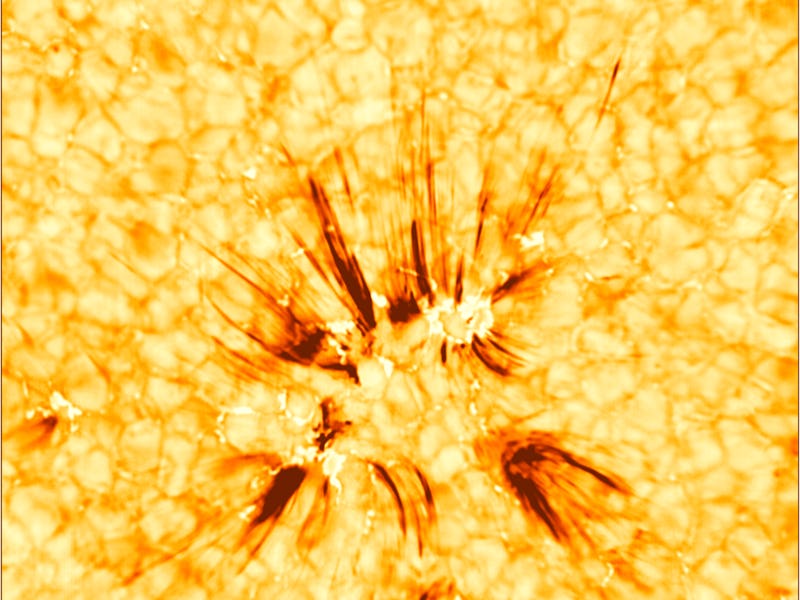The sun's hottest mystery may have been solved
Tiny -- but mighty -- plasma jets may be heating things up at the solar corona.

The Sun is hot. Temperatures of our host star’s core can reach 15 million degrees Celsius. Things get relatively cooler the further you move away from the center of the Sun — it’s a balmy 5,700 degrees C at the solar surface.
But the temperature swings don’t stop at the Sun’s surface. In the outermost part of the solar atmosphere, known as the corona, temperatures start to rise, reaching more than one million degrees C. What causes this extreme heating has plagued scientists for years, but a recent observation of tiny solar jets may have just provided the answer.
A new study, published in the journal Science, found that solar spicules, or small jets of plasma on the Sun’s lower atmosphere, are the main culprits behind the heating of the corona.
Incredibly, it took Tanmoy Samanta, a researcher at the Indian Institute of Astrophysics and lead author of the study, and his team just ten minutes of observations to find the answer to this previously unsolved question.
“There are millions of [solar spicules] in the Sun, they’re everywhere but they’re also very small,” Samanta tells Inverse. “So you really need a very large telescope to be able to see this very small structure, and we had excellent observing circumstances.”
Surprising solar spicules
Small as they may be, the spicules prove to be quite mighty.
Solar spicules are about 200-500 kilometers wide and shoot up to around 5,000 kilometers above the solar surface. And, as Samanta says, there’s a lot of them.
In fact, around a million spicules shoot up every minute — a large enough number to cause the Sun’s corona to heat up so dramatically.
Scientists had previously speculated that this may be the case, but there was no available evidence to back up the hypothesis. The spicules were just too small to be seen with older instruments. The team behind the new study was able to observe them in action using the Goode Solar Telescope, which has the largest aperture for a solar telescope currently in operation.
These jets are intertwined with the Sun’s magnetism. As two magnetic fields with different polarities realign on the solar surface, bursts of spicules flare up.
Every 11 years, the Sun’s magnetic field goes through a periodical cycle in which the south and north poles essentially switch spots. Towards the end of this cycle, the Sun’s activity starts to increase, with more solar flares and material bursting out into space.
Through further observations of the Sun’s atmosphere, the team of researchers hope to get a better understanding of how these plasma jets may also contribute to the solar wind — the flow of charged particles that emanate from the Sun and spread throughout our Solar System.
“Solar activity as a whole mostly depends on the magnetic field,” Samanta says. “Without the magnetic field, the Sun would be really boring. Nothing would happen.”